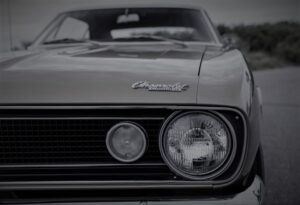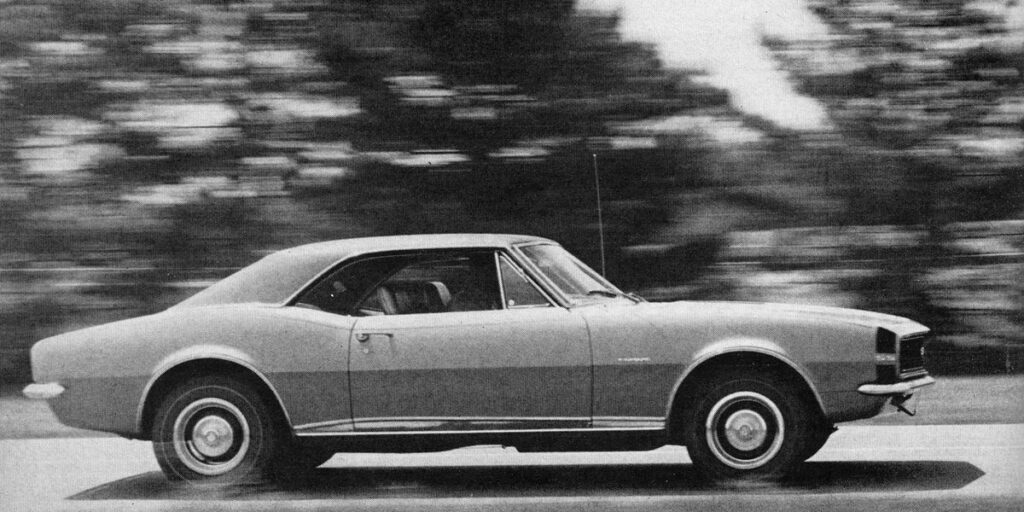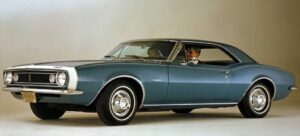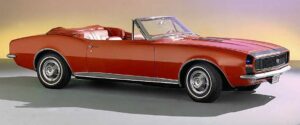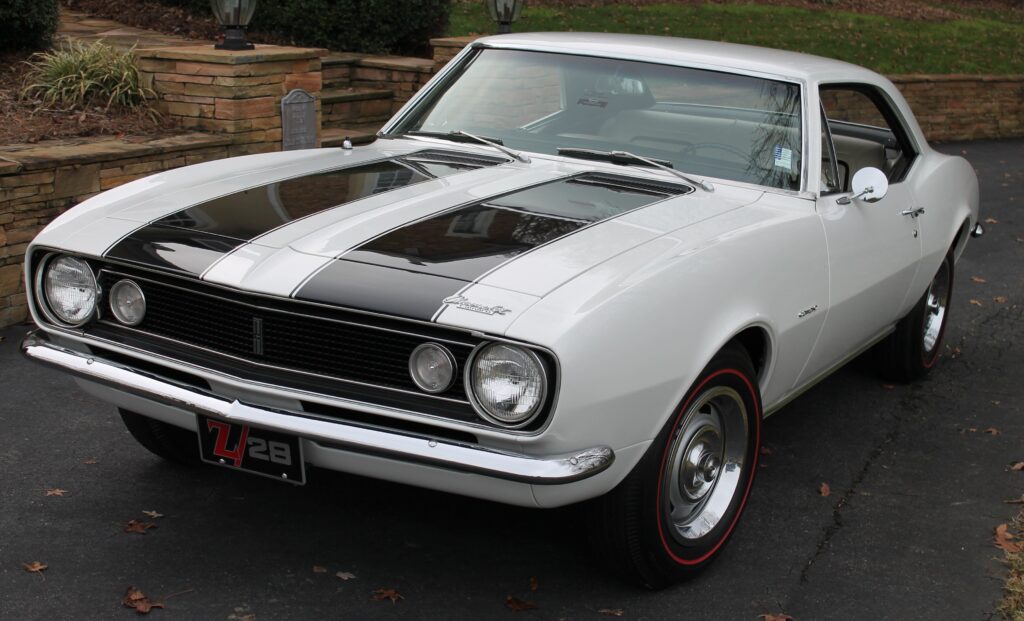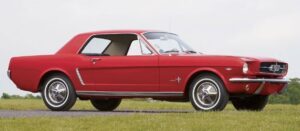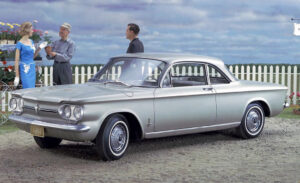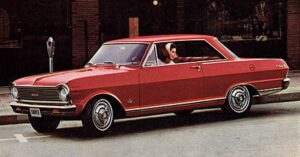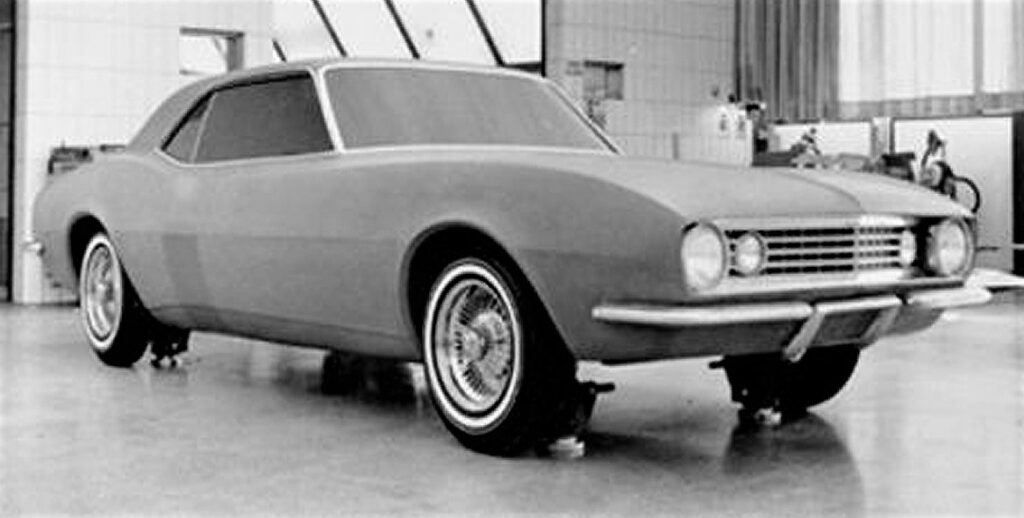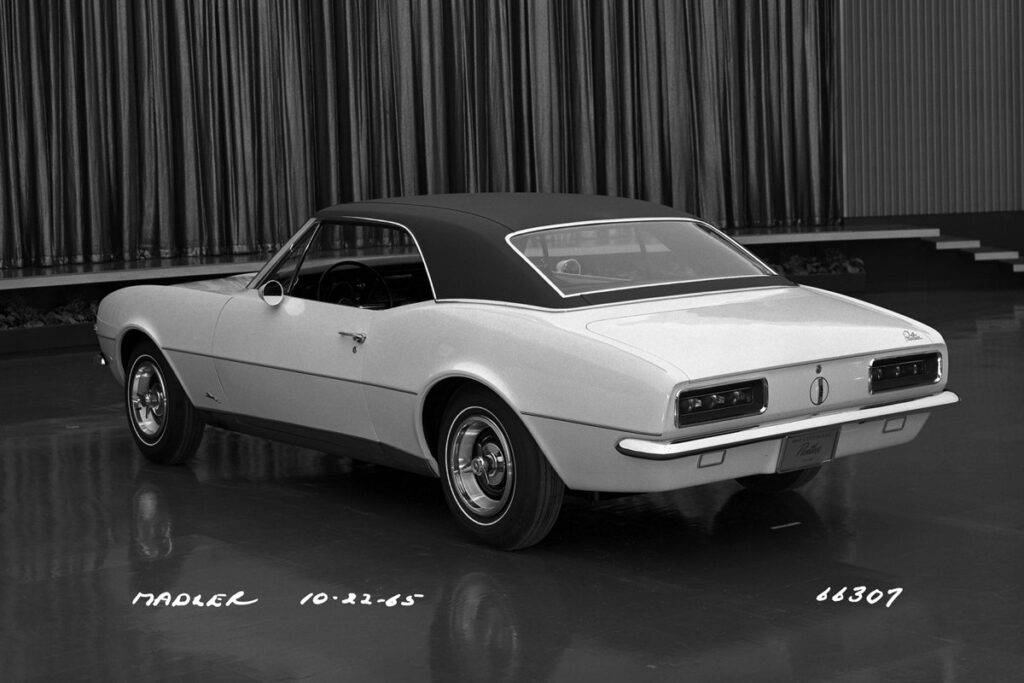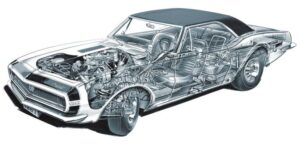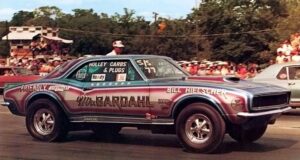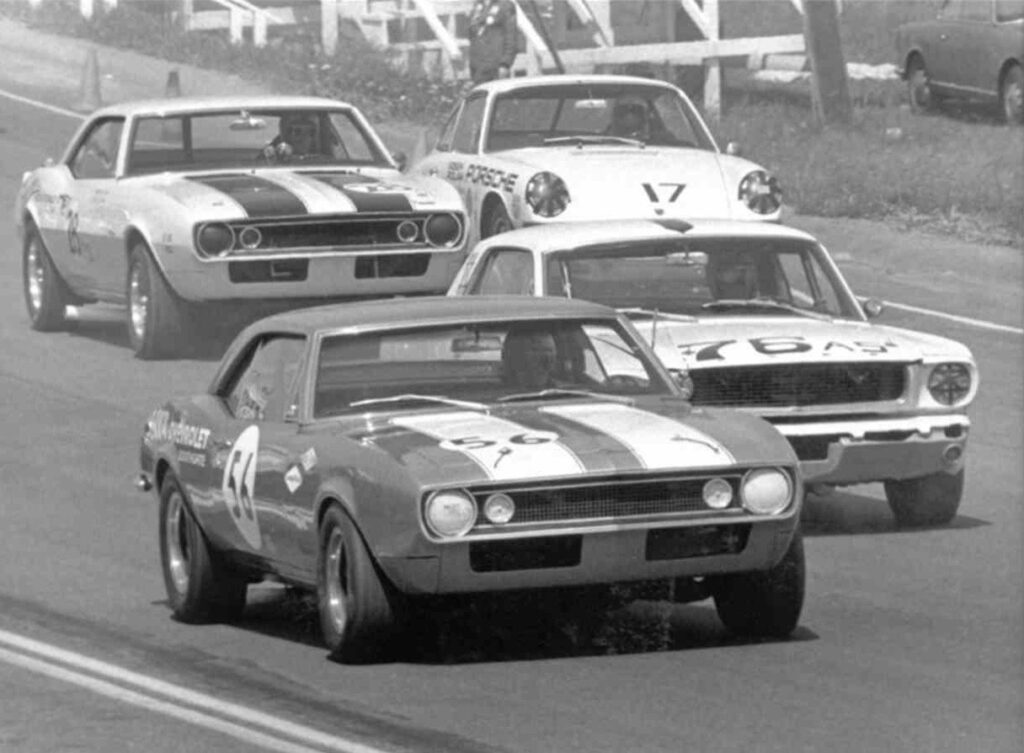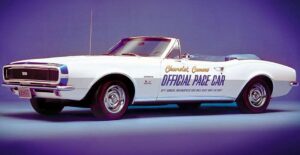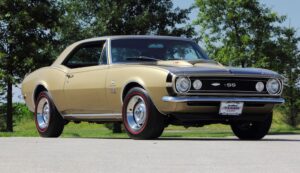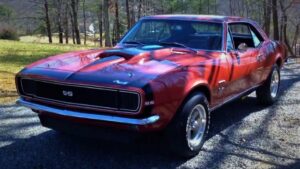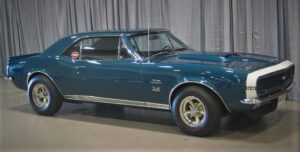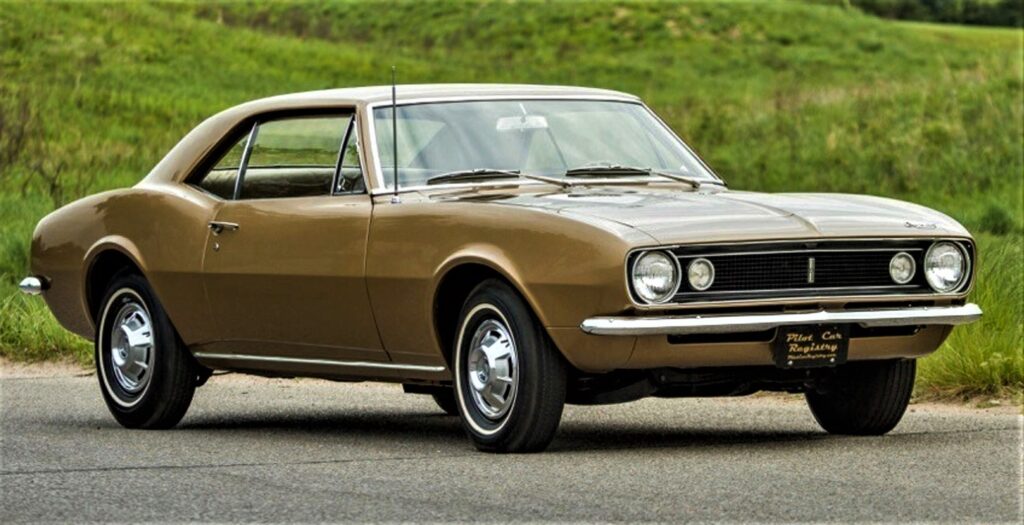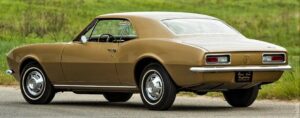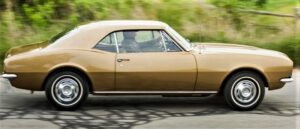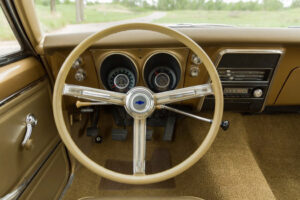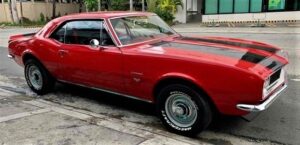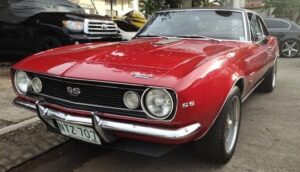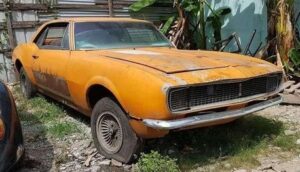September 2021 marks the 55 years since the introduction of the Chevrolet Camaro. Known inside General Motors (GM) circles as the F-Body platform, the Camaro was officially marketed starting in September 29, 1966 for the 1967 model year. It was GM’s entry into the then-new segment of the American car market – the pony car – or sporty 2-door coupes with long hoods and short rear decks that attracted a majority of the car-crazed youth of the 1960s.
With 2+2 seating, the 1967 Camaro can ordered as 2-door coupe or 2-door convertible in various trim levels starting with the base model fitted a 250 cubic-inch (4.0-liter) overhead valve (OHV) inline 6-cylinder, to a racy Z/28 with a high-revving 302 cubic-inch (4.9-liter) V8, or Super Sport (SS) trim equipped with engines ranging from 327 cubic-inch (5.4-liter) or 350 cubic-inch (5.7-liter) small block Chevy (SBC) V8s up to 396 cubic-inch big block (BBC) V8s. Opting for the Rally Sport (RS) package adds hidden headlights with retracting covers.
Let’s Set The Record Straight
Automotive historians have traditionally written that the 1967 Camaro was Chevrolet’s late and hurried response to the successful 1964½ Ford Mustang. It would be easy to think that GM took more than two years to come up with an answer to Ford’s pony car but the actual truth is quite the opposite. GM already had plans for a sporty personal car as early as 1962 or two years before Ford launched the Mustang. In fact, the rear-engine air-cooled 1960 Chevrolet Corvair was responsible for uncovering a huge demand for low-priced sporty cars with bucket seats and floor-mounted shifters.
In 1962, Chevrolet sold almost 220,000 Corvair Monza units, which prompted GM design director Irwin W. Rybicki and corporate styling chief William “Bill” L. Mitchell to pitch the idea of a smaller, less costly “personal car” based on the Chevy II Nova. But Ford Division Chief Lee Iacocca would beat GM to the punch when he used the underpinning of a 1961 ½ Ford Falcon and came out in April 1964 with the Mustang, which sold more than one million units in its first 18 months of production. The new “pony car” market segment was credited to the Mustang’s runaway success and was aptly named in its honor.
The General Fires Back
In 1965, GM engineers and designers under Chevrolet General Manager Pete Estes started working on a competitive pony car model code-named the Panther. GM engineers came up with a conventional front-engine and rear-drive configuration based on the Chevy II Nova but included a subframe and engine bay that could fit a variety of power plants from a thrifty inline-six to a monster big block V8 so buyers can equip it to match their personality and performance needs.
GM held a press conference in Detroit’s Statler-Hilton Hotel on June 28, 1966 to announce the new Camaro. When asked about its name, Estes claimed that “Camaro” suggests camaraderie and friendship but jokingly added that it was “a small, vicious animal that eats Mustangs”. GM unleashed the Camaro on September 29, 1966 to Chevrolet dealerships to devour some of the Mustang’s sales. To promote the performance potential of the new car, GM fielded the 1967 Camaro in drag racing, circuit racing, and even became the pace car of the 1967 Indianapolis 500.
Collectible Versions of the 1967 Camaro
Even though the Mustang had the upper hand in the sales department, the Camaro had the upper hand in performance, led by the likes of the Z/28, SS, and RS models. Special order versions, such as the Corporate Office Production Order (COPO) and high-performance versions fitted with 427 cubic-inch (7.4-liter) big block V8s by Chevrolet dealerships such as Yenko, Baldwin Motion, and Nickey, became legends on the streets and racing circuits. Original examples that survived the stresses of racing and street driving duties during the late 1960’s are highly collectible today, commanding prices as high as $300,000 (P15Million) for a mint, unrestored Yenko 427.
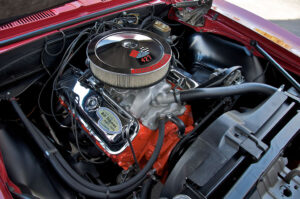
Dealer-installed 427 V8s replaced the factory 396 V8s to create the legendary COPO, Yenko, Baldwin Motion and Nickey Camaros.
Perhaps, the most collectible 1967 Camaro of all is not a high-performance version but the first-ever Camaro, one of 52 pre-production or pilot prototypes that were secretly assembled in an old WWII warehouse in Norwood, Ohio. Chassis Number 100001 is a base model Camaro equipped with a six-cylinder motor and painted in Granada Gold, a 1960’s GM color, with a gold-colored interior. It was made to serve as a teaser for a marketing campaign in August 17, 1966, which was a month before the Camaro officially went on sale. It was bought by R.T. Ayers, a Chevrolet dealer in Yukon, Oklahoma, to attract customers to the showroom, and then passed through several owners afterwards and even became a drag race car before it was identified as a historically important vehicle and restored back to its original condition.
In the Philippines, the Chevrolet Camaro was imported as knocked-down components and assembled from 1967 to 1969 by the Yutivo Corporation, which was the GM distributor in the country back then. The Camaro had a following among local Chevy enthusiasts as a performance car, especially after the factory six cylinder motors were replaced with potent V8s. In the 1990’s, local car collectors prefer Camaros that were made in America (Norwood and Van Nuys), but with the increasing rarity of Yutivo Camaros, these have become highly-prized today.
In any shape, condition or form, a 1967 Chevy Camaro is a collectible car today. If you can get your hands on one, whether in mint condition or a restoration project, once it’s yours, it’s definitely a keeper!
 Power Wheels Magazine A Notch Above
Power Wheels Magazine A Notch Above

